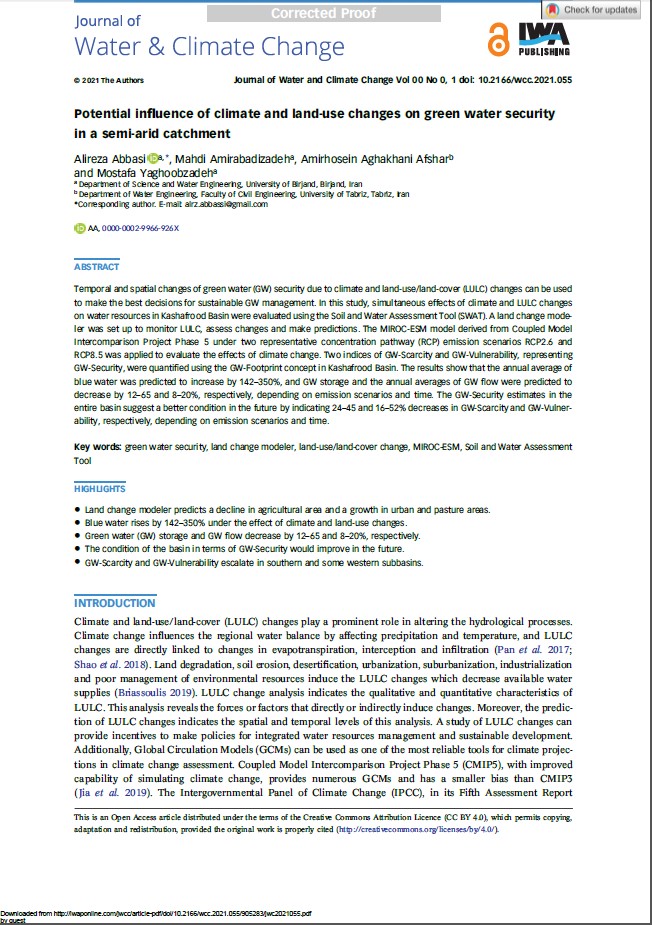Potential influence of climate and land-use changes on green water security in a semi-arid catchment
 |
article Jan 2021 ; 17 pages
Ed. IWA - London
Téléchargeable sous format: PdF
Téléchargeable chez l'éditeur
Résumé:
Temporal and spatial changes of green water (GW) security due to climate and land-use/land-cover (LULC) changes can be used to make the best decisions for sustainable GW management. In this study, simultaneous effects of climate and LULC changes on water resources in Kashafrood Basin were evaluated using the Soil and Water Assessment Tool (SWAT). A land change modeler was set up to monitor LULC, assess changes and make predictions. The MIROC-ESM model derived from Coupled Model Intercomparison Project Phase 5 under two representative concentration pathway (RCP) emission scenarios RCP2.6 and RCP8.5 was applied to evaluate the effects of climate change. Two indices of GW-Scarcity and GW-Vulnerability, representing GW-Security, were quantified using the GW-Footprint concept in Kashafrood Basin. The results show that the annual average of blue water was predicted to increase by 142–350%, and GW storage and the annual averages of GW flow were predicted to decrease by 12–65 and 8–20%, respectively, depending on emission scenarios and time. The GW-Security estimates in the entire basin suggest a better condition in the future by indicating 24–45 and 16–52% decreases in GW-Scarcity and GW-Vulnerability, respectively, depending on emission scenarios and time.
Mots clefs: |
changement climatique (CI) (DT) (OP) (ope) , changement climatique - adaptation (CI) (DT) (OP) (ope) , gestion de la ressource en eau (CI) (DT) (OP) (ope) |
Pays concerné: |
Editeur/Diffuseur: |
|
IWA
-
International Water Association - London - Royaume Uni |
En cas de lien brisé, nous le mentionner à communication@pseau.org